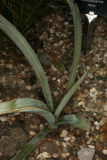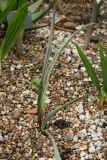Additional notes (click to expand)
Medicinal
An infusion of the pulverized leaves has been used as an antiemetic to prevent vomiting. The fruits have been eaten raw as a laxative.
Plants for a Future (2015) http://www.pfaf.org/user/Plant.aspx?LatinName=Yucca+baccata
link
Nomenclature
Family changed from Agavaceae to Asparagaceae.
Plants of the World online, Kew Science http://plantsoftheworldonline.org/taxon/urn:lsid:ipni.org:names:270284-2
link
Toxicity
The saponins all yuccas contain may lead to abdominal disturbance if eaten raw. They are removed by cooking. Said to be very toxic to dogs.
Professor Anthony Dayan, 2022
Geographical distribution
- Northern America, Mexico, Mexico Northwest
- Northern America, Northwestern U.S.A., Colorado
- Northern America, South-Central U.S.A., New Mexico
- Northern America, South-Central U.S.A., Texas
- Northern America, Southwestern U.S.A., Arizona
- Northern America, Southwestern U.S.A., California
- Northern America, Southwestern U.S.A., Nevada
- Northern America, Southwestern U.S.A., Utah
Yucca baccata Torr.
Family: ASPARAGACEAEGenus: Yucca
Species: baccata Torr.
Common names: Spanish Bayonet; Banana yucca; Spanish Yucca
Distribution summary: Northern America
Habit: Succulent
Hardiness: H4 - Hardy; average winter
Habitat: Rocky slopes, scrub & light woodland
Garden status: Not currently grown
Flowering months: August
Reason for growing: Medicinal, toxic

